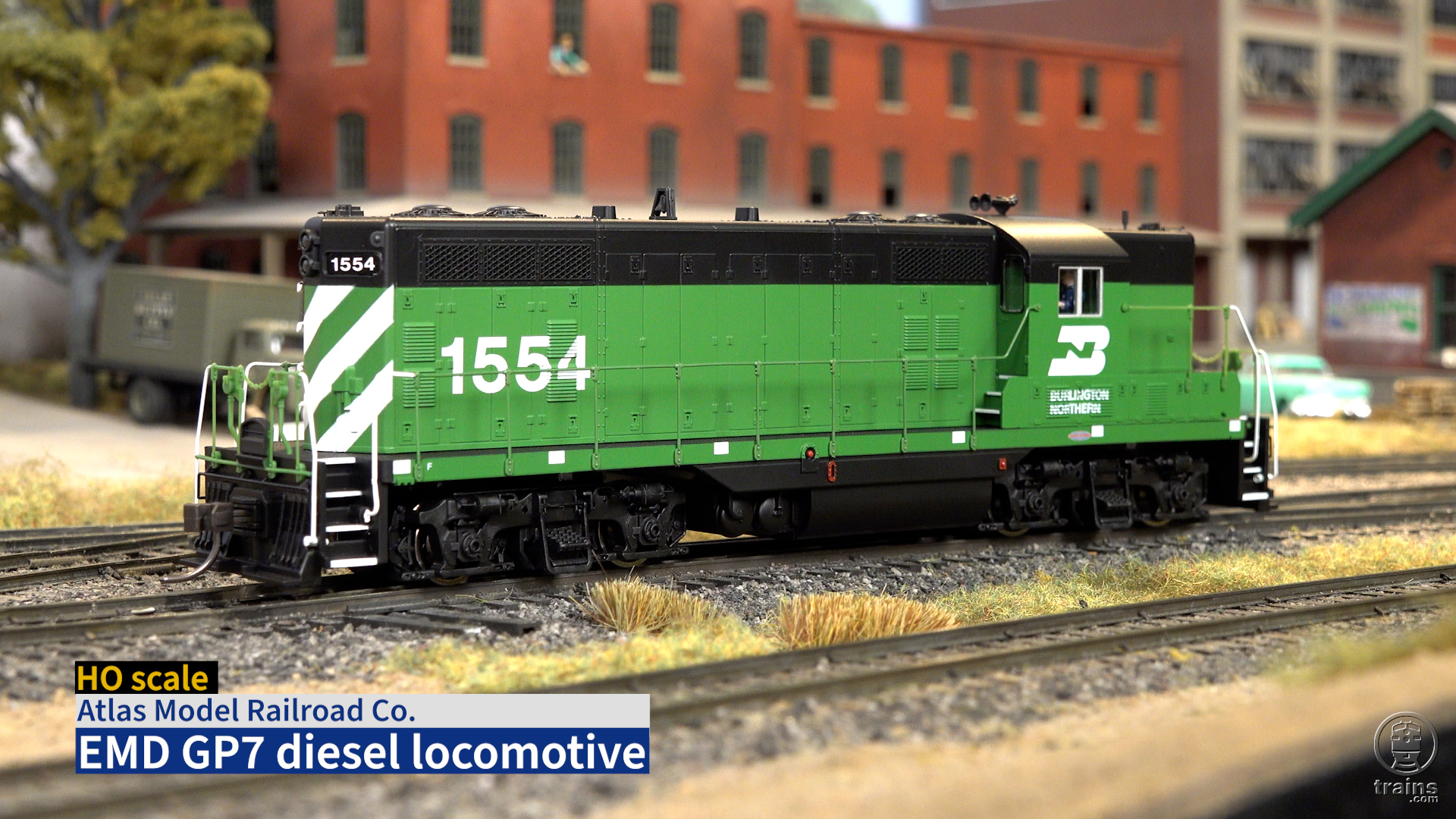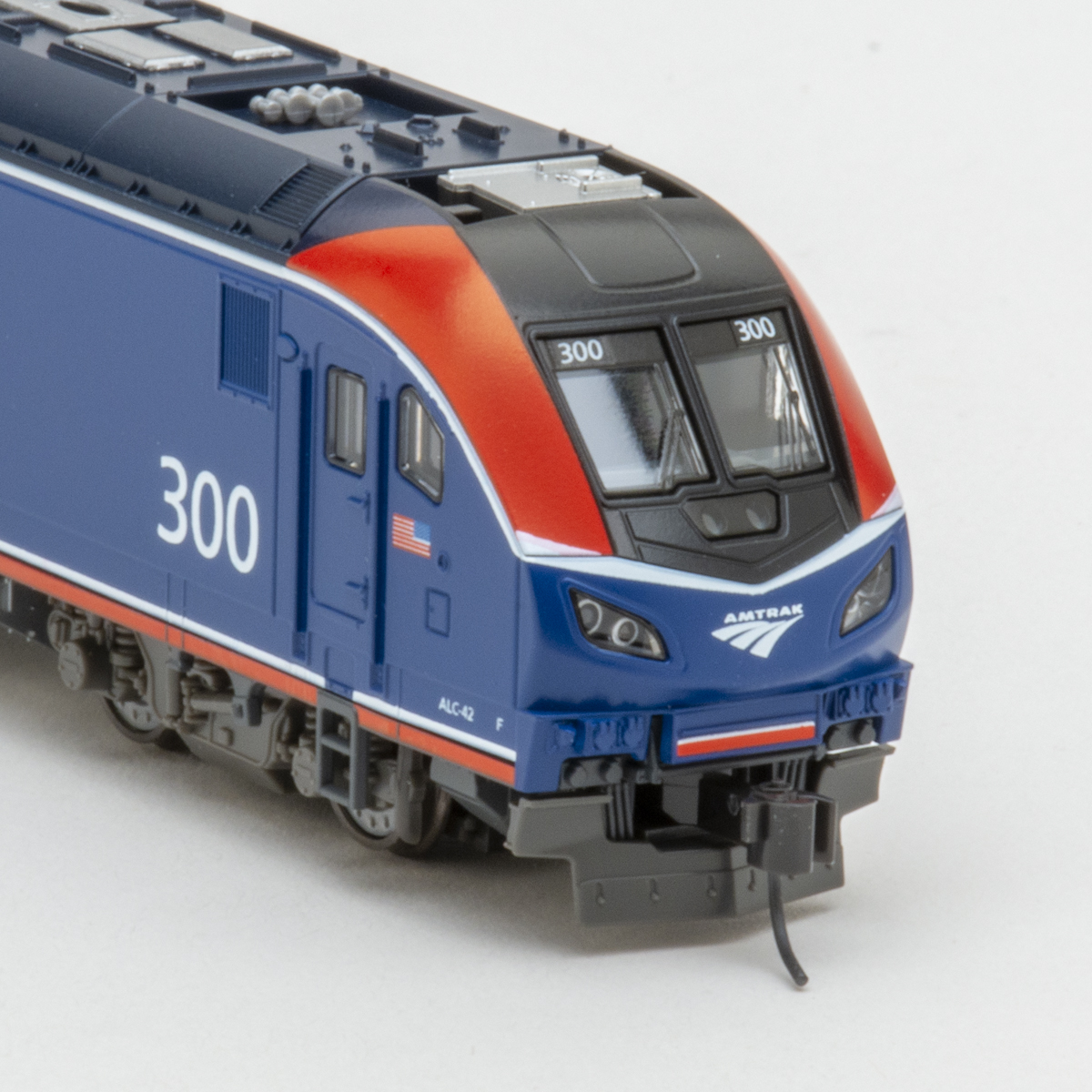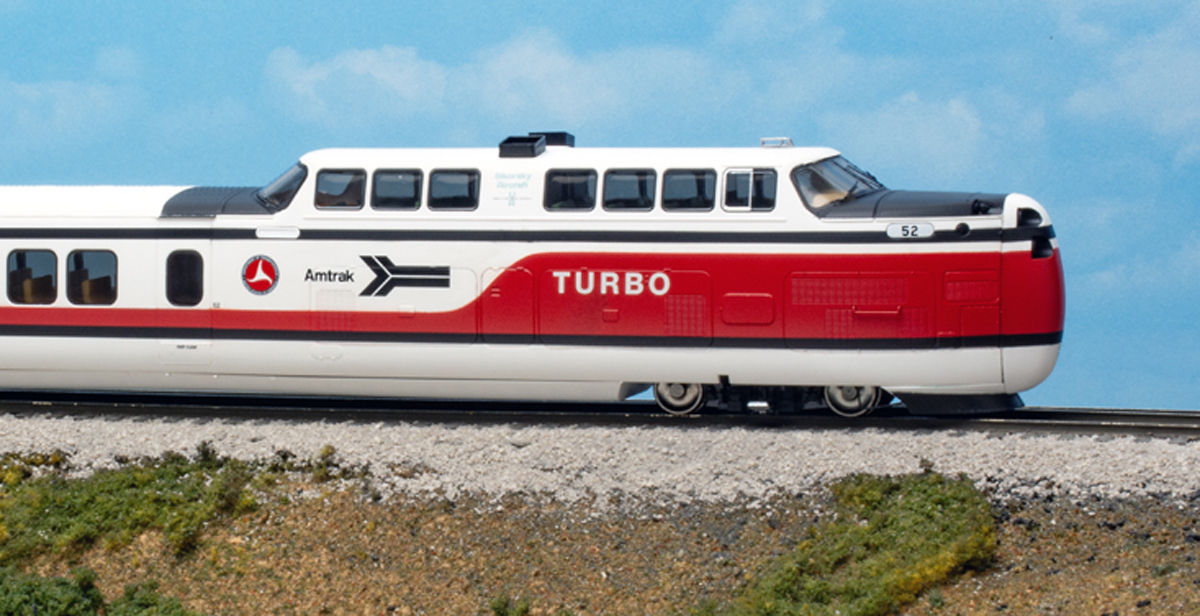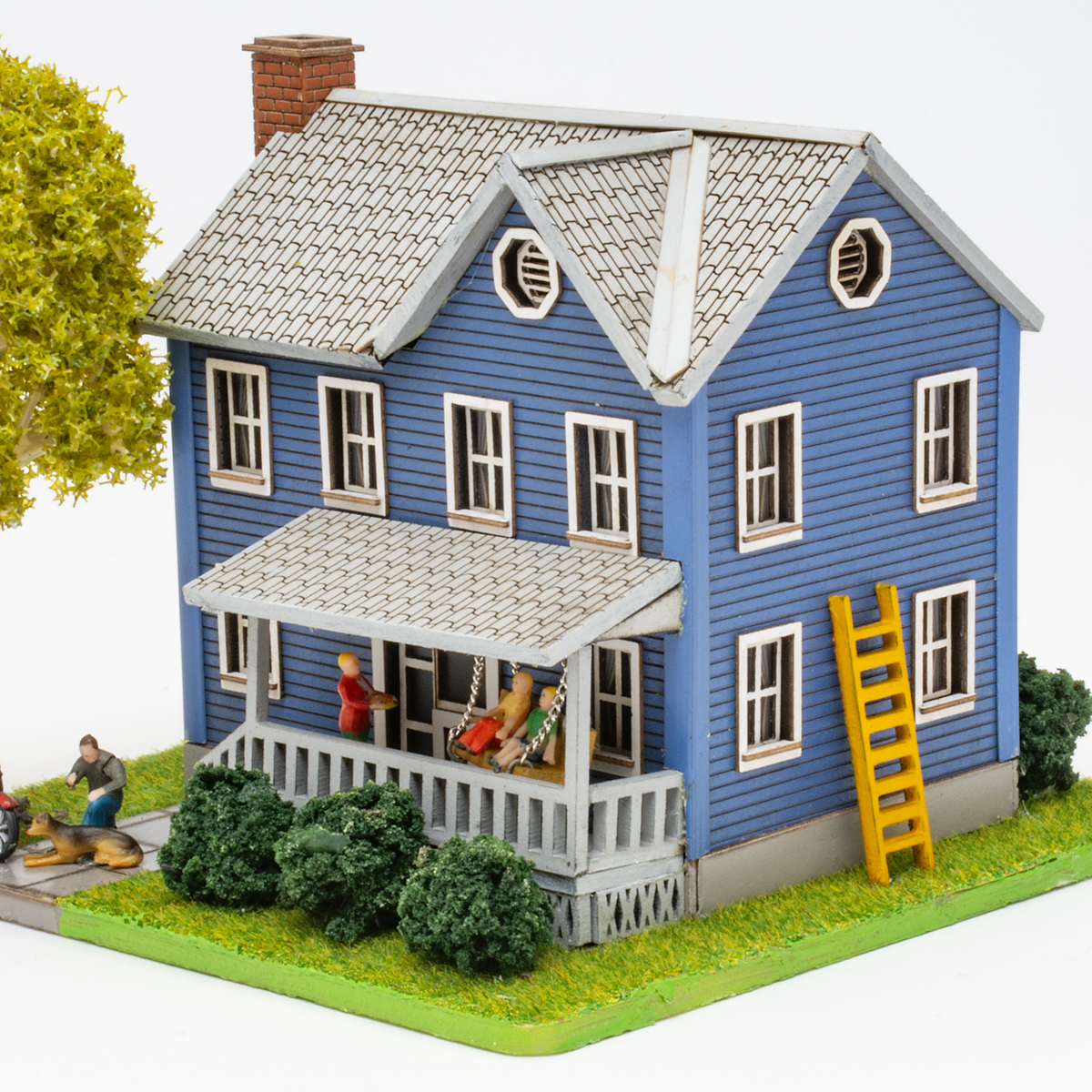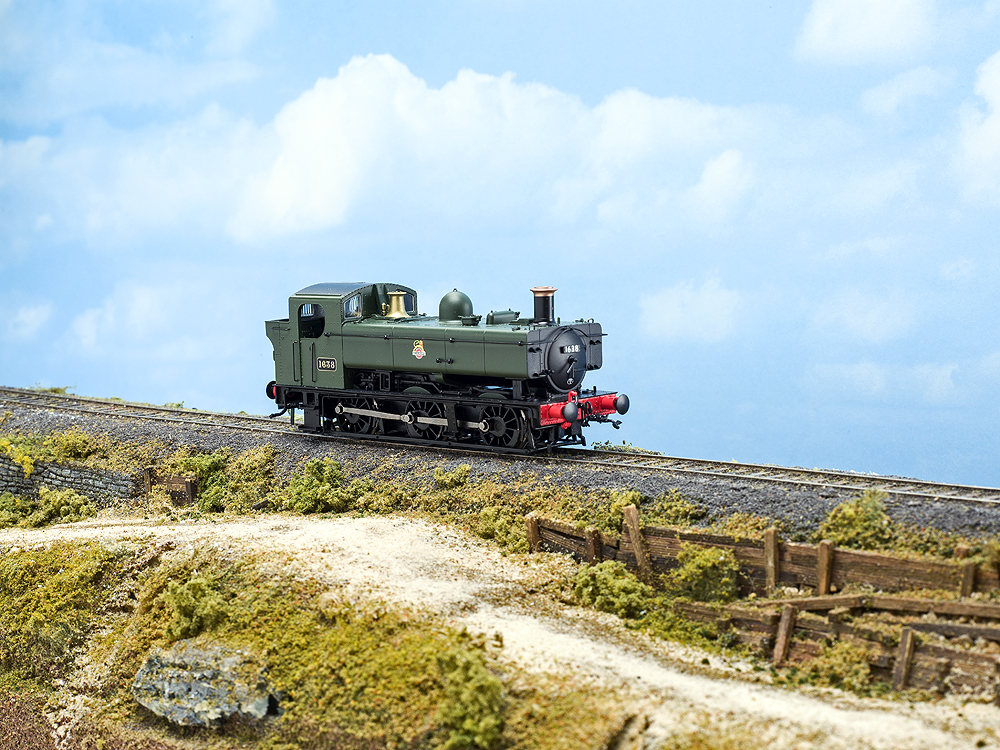
Model Rail Offers at www.modelrailoffers.co.uk for £149.00 plus shipping (approximately $200 as of this writing).
Pluses
Hefty die-cast construction, smooth operation, and great detail
Minuses
DC-operation only. Circuit board issue requires replacement (available from Model Rail Offers) for use with DCC
Verdict
Solid running model of a British Railways steam-era light-duty locomotive
Overview
You couldn’t throw a stone in the 1950s on British Railways Western Region and not hit a pannier tank locomotive. A pannier tank derives its name from the pair of saddlebag-style water tanks carried along either side of the locomotive’s boiler, which are called “panniers” in the U.K. Praised for their versatility to operate forward or backward in light freight and passenger work, examples of the pannier tank design inherited from the region’s Great Western Railway could be found everywhere.
Late last year, Model Rail released its version of the WR 16XX 0-6-0PT locomotive in OO scale. The model is manufactured by Rapido Trains, and comes in DC-operation only, but has a large assortment of paint styles and road numbers to choose from.
Jason Shron of Rapido Trains, knowing my love of British railroading, was nice enough to send me a sample. And while this is not a locomotive we would normally review in the pages of Model Railroader magazine, I figured, “why not review it for Trains.com?” After all, we have an international audience.
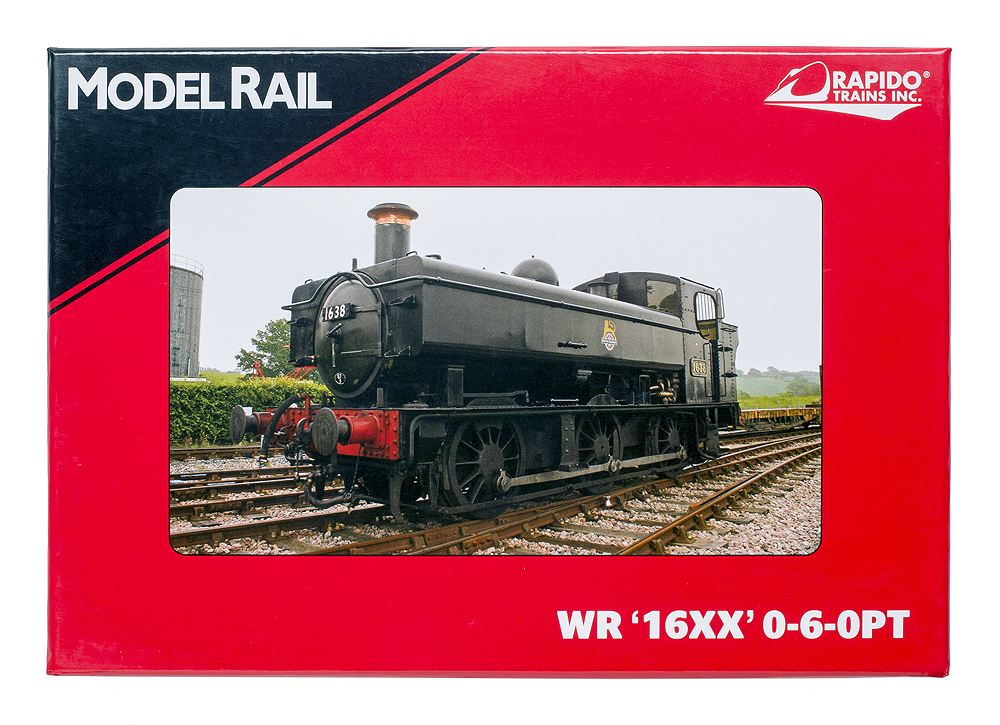
A wee bit of history
According to the history found in the instruction booklet, BR built 70 of the 16XX type in two batches, one in 1949 and the other in 1955. Despite the fact that the pannier tank looks to be a Great Western Railway product, it was a fully modern BR locomotive at the time. The last 16XX was withdrawn from service in 1966.
My sample model is based upon no. 1638, the only one of its class to survive into preservation. The model is painted in unlined BR green with the early BR logo – a paint scheme it never wore during its service life, but later in preservation. The Kent & East Sussex Railway now owns the 1638, and it was restored to operation in 1994.
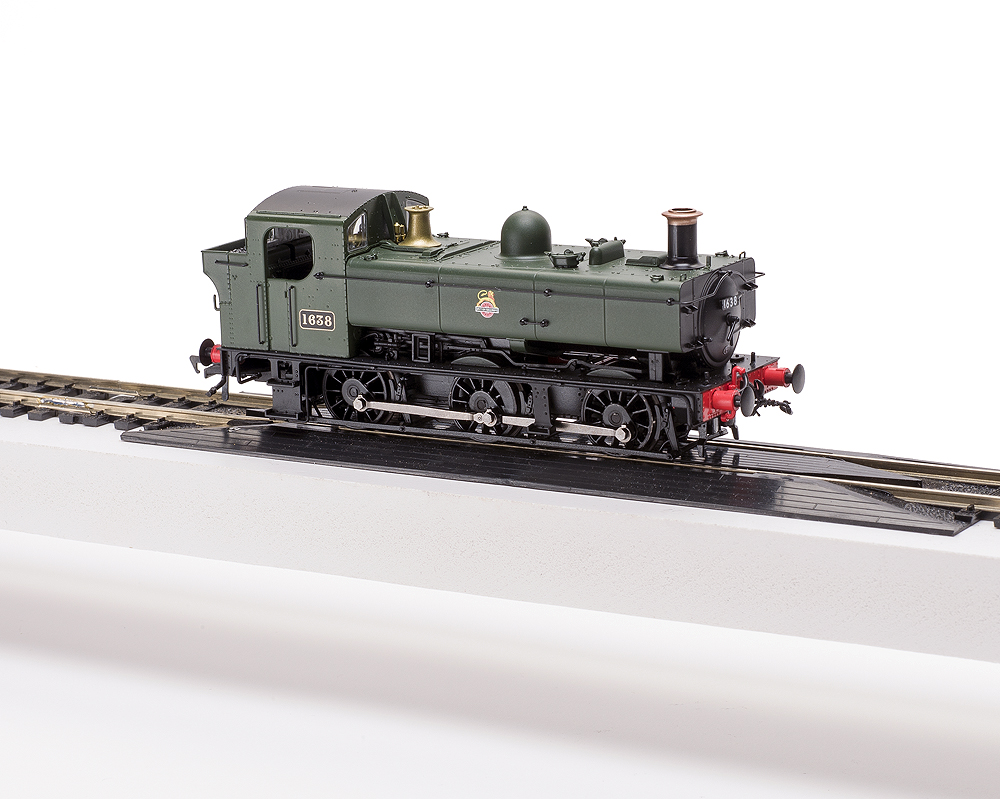
Taking it for a spin
When compared to photos, the model captures the look and feel of the 16XX locomotive well, with many separately applied detail parts. The motor on my sample operated smoothly straight out of the box, although the Rapido instruction booklet suggests putting it through a run-in period in both directions to properly seat the drive mechanism. A half-hour or so running on a test loop or orbiting your layout should do the trick nicely.
For a small locomotive, the 16XX should have good pulling power thanks to its hefty die-cast metal construction. The cab, tanks, and frame are all metal, plus there is a metal weight mounted directly above the motor. The model topped the scale at 9 ounces, which was surprising for a locomotive this small. By comparison, my Bachmann Branchlines 64XX, which is another pannier tank or similar size, weighs just 6.6 ounces, so I expect the 16XX to out-perform it for hauling power.
All six wheels collect electricity for the 5-pole can motor, and I was surprised to find that each wheel has its own separate collection wire that solders to the model’s circuit board. My sample crept along my test track smoothly using a DC power pack. It should handle the same pulling of a string of wagons or coaches.
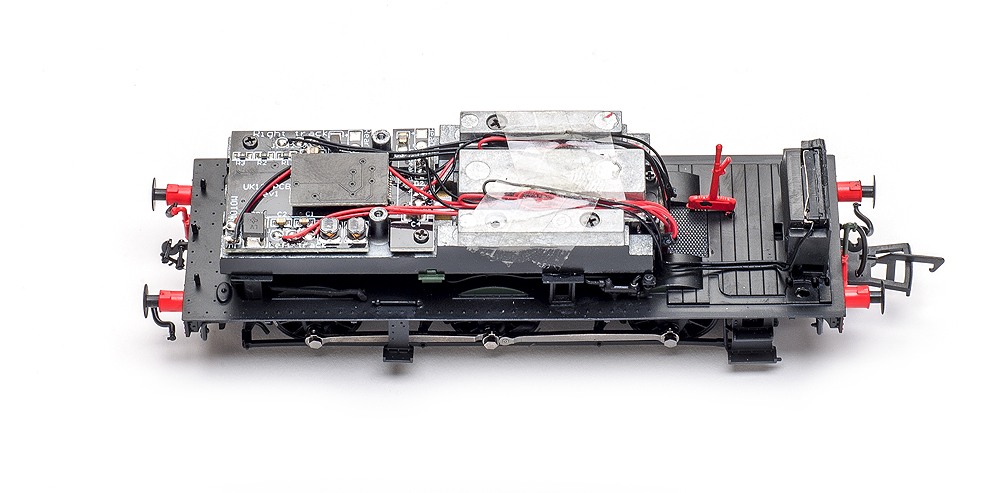
Under the shell
The model comes with a NEXT-18 DCC decoder socket as part of its circuit board. To use it, you need to remove the dummy plug, but be aware that this batch of 16XX locomotives has a faulty circuit board. Rapido Trains UK strongly suggested that I remove the circuit board completely and wire a decoder directly into the model instead. The firm is in the process of issuing a replacement board, and you can learn more from RapidoTrains.co.uk. If you replace the circuit board, the decoder socket should be good to use with any NEXT-18 plug-equipped decoder.
The model comes with a speaker already installed in the coal bunker, so all I should need to do is solder the decoder to the wires already provided in the locomotive and be ready to run. (I may do a follow-up article on that process, particularly since I also want to try and fit a capacitor pack into the model.)
Speaking of decoders, I’ve ordered an ESU LokSound decoder from Rails of Sheffield loaded with appropriate sound files from Southwest Digital DCC. The firm’s S0161 Group 1 sound series includes GWR-type small steam locomotives, including a pannier tank engine in the 16XX class, so it’s ideal for this model.
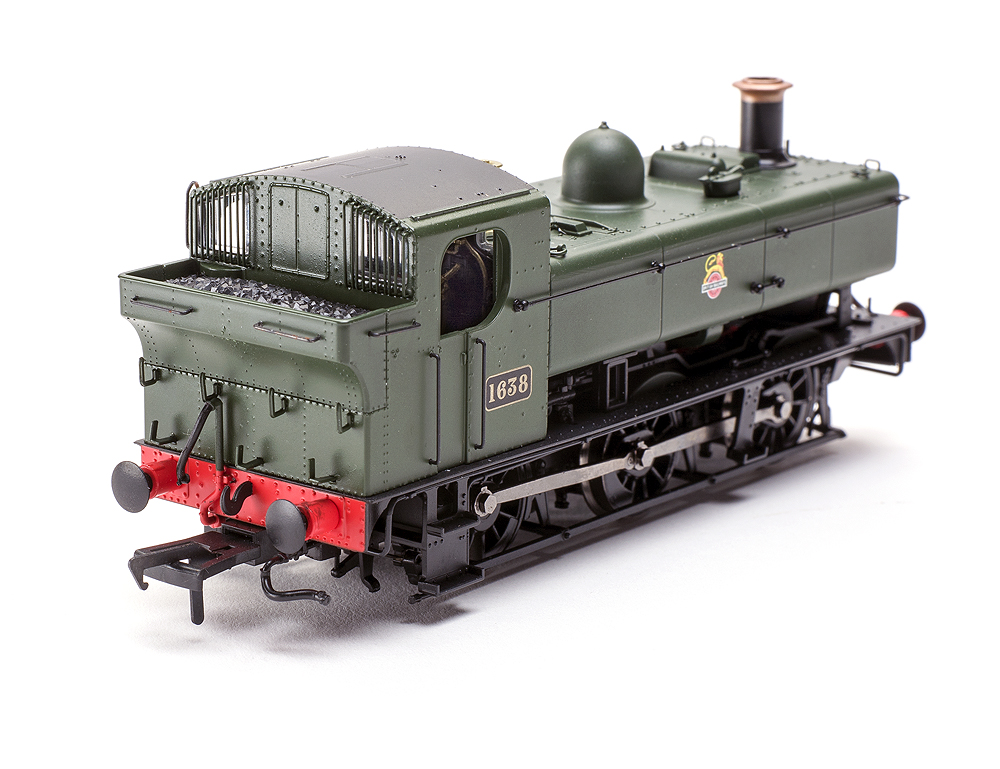
Extra details
The 16XX features a variety of details, most of which are plastic, wire, or etched metal. Some of these are glued directly to the metal body and chassis, while others are press-fit. I especially liked the wire grab irons and the fine window-protective gratings on the back of the engine. The two water hatch covers on top of the tanks are examples of press-fit parts, as they conceal two of the four screws that hold the tank and cab to the frame.
Handle the model carefully! In replacing the front buffer beam NEM coupler pocket with a screw coupling, I knocked loose a sander and the vacuum pipe bracket. These were easy to glue back with some gel CA (superglue), but I can tell the plastic parts don’t like to attach to the painted metal parts securely. They should remain in place during normal operation, but rough handling will likely cause them to come loose again.
Speaking of parts, the model comes with a small bag of additional details, including screw couplings, grate tools to be mounted on the back of the coal bunker, as well as an extra set of 3 etched-metal lamp irons. Some 16XX locomotives had irons mounted on frame on the fireman’s side of the engine, and the instruction booklet gives suggestions for two common locations. To mount them, I’d recommend removing the body and drilling small holes into the running board. Then insert the lamp irons and secure them with superglue.
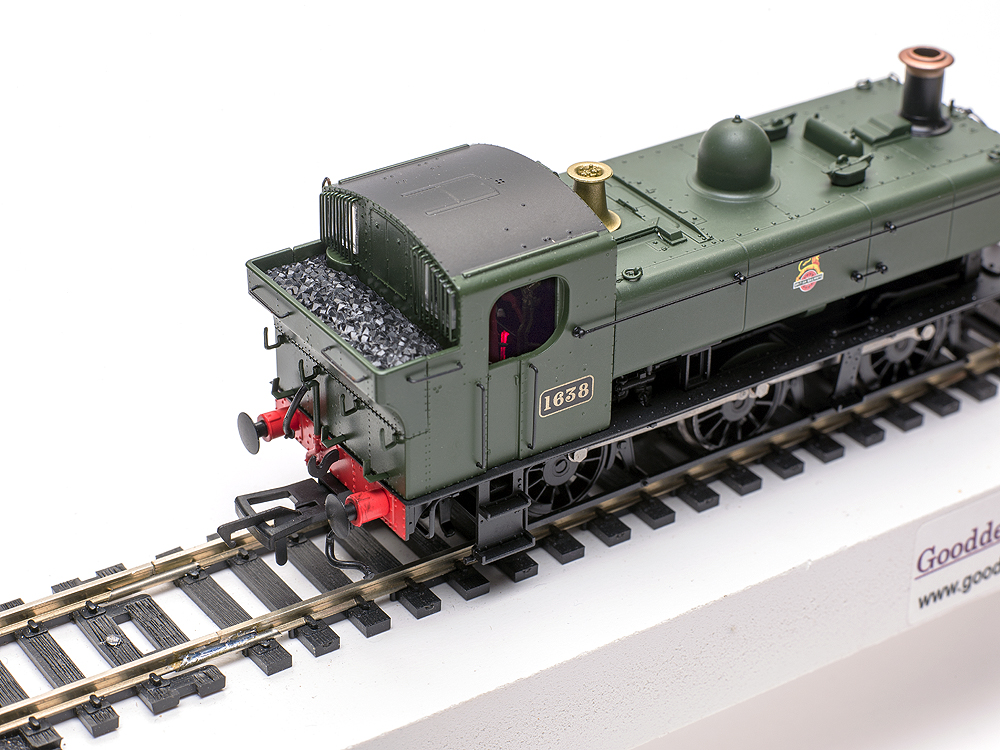
A delightful bonus
One final surprise on this model is the inclusion of a firebox LED. On DC operation, the firebox lit even at the locomotive’s slowest speeds. Once I install a crew in the cab, the firebox glow will be a welcomed addition to watching this model run.
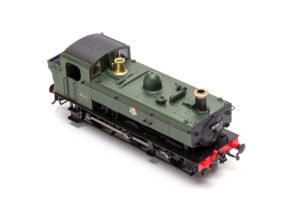
Verdict
The 16XX is a solid model with ample detail, and its smooth-running motor and 9-ounce weight should make it a strong performing pannier on most any layout. While the loss of the use of the NEXT-18 socket on the stock model doesn’t necessarily make installing DCC as easy as it could be, I’ve been wiring decoders into locomotives for years, so I fully expected to have to do that here anyway.
The bottom line is that I really like the model, and it is a welcomed addition to my ever-growing fleet of British Railways steam locomotives.






